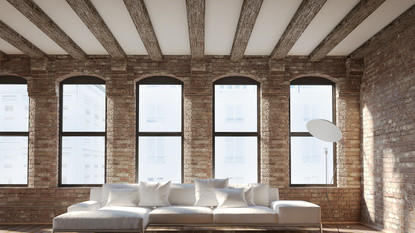This article originally appeared on The La Jolla Light
A home building resurgence is underway in Southern California, especially of luxury homes. But limited space will make construction of new properties harder to come by, especially in desirable suburbs. But if you want your luxury home, you don’t have to wait for your perfect mansion in the hills or beach-front spread.
An increasing number of home buyers are turning the traditional style of homes on its head by re-envisioning the shape of luxury with adaptive reuse.
Urban renewal and renovation projects have given rise to visionary homeowners who are looking to revitalize old and historic buildings, adapting them and reusing them to make their luxury dream home.
From a 19th century tobacco and candy shop to water towers to an extreme case of Holmenkollen’s ski jump in Oslo, Norway, being converted into a home, adaptive reuse leads people to be creative with not only what can become a living space but how to make a luxurious living space from an industrial or unexpected structure.
Older buildings often used solid materials and were crafted, rather than thrown together. Many of these details are coveted now and can be put on full display in the repurposed luxury home. Peeling plaster can be redone or it can be polished, giving interior walls an aged, patina look, evocative of old Europe. Many of the original features of the structures are highlighted to give an aged look or industrial edge to the luxury dream home. Before, builders would deconstruct old barns to get the wood to floor or beam new construction with the already-weathered and worn wood; now, adaptive reuse means updating the barn itself.
So Southern California doesn’t have many barns. However, many urban areas have buildings no longer in use, and so factories can become single-unit dwellings or zoned for a luxury duplex, or even combined to be a home and an office (this seems to be a frequent occurrence among architects).
Most factories already have the desired open floor plan and plenty of windows to let in natural light, making a perfect skeleton for a large living room and dining room for entertaining, or a game room (or bowling alley?). And since the structure is already built (and usually, these preexisting structures are in solid shape, even if a little shabby), more of the focus of the homeowners can go into the personalizing details that will become the signature showpieces for any luxury dream home.
San Diego has in place ordinances for historic preservation and adaptive reuse and under the Mills Act offers property tax relief to rehabilitate and maintain what the city has designated a historical resource. These are rehabilitation tax credits, and overall, San Diego believes that preservation can increase property values while conserving resources and generating jobs—as well as heritage tourism.
If you’re on the lookout for an adaptive reuse location or are ready to plan your luxury home, contact us for expertise at www.murfeyconstruction.com.

